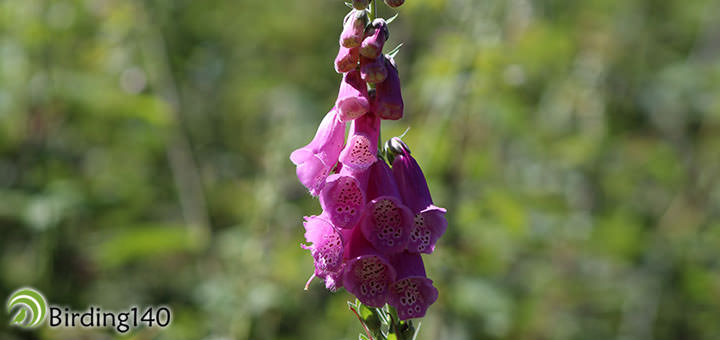We travelled to Galicia with our beloved friend Miguel, who had organised a circular route by car through the provinces of Lugo and Ourense. The plan was to go across different settlements in search of the birds of prey that are so uncommon to see in Galicia, following the SCI Ancares-Courel all the time. We started in O Cebreiro, a small village in Lugo, in the height of St. James’ Path, located in the western edge of the Cantabrian Mountains. From its picturesque pallozas and surrounded by pilgrims, you can see Los Ancares from the east, and part of Serra do Courel from the west. The pallozas are cottages with stone walls and dried broom ceilings, where people used to live together with the cattle from the pre-Roman times until not so long ago. The variety of colours in the forest at this time of the year is impressive.
Early in the morning, the high temperatures anticipated the disaster. Rather than getting discouraged, we decided to follow one of the best routes for the observation of birds of prey in Galicia. Our next target was the Serra do Courel, where the riverside forests are mixed with beech and oak groves. The fusion of ecosystems turns this mountain range into a unique microclimate. The Pía Paxaro Mountain, with over 1600m, was challenging us. However, the possibility of sighting a Golden Eagle, Northern Goshawk, Short-toed Snake Eagle or Northern Harrier motivated us to continue along the narrow road.
We went through the mountains with little luck and a few interesting sightings. At every step, we were surprised by chaffinches throwing themselves from one ditch to the other in a path that was becoming narrower and narrower. Foxgloves added a touch of colour from one side of the road; from the other side, we could get a glimpse of what the leafy forest was hiding among all the greenness. However, due to the thickness and the high temperatures we arrived to Seoane do Courel with no sightings of birds of prey at all. Once we arrived to the little festive village, we went to the Courel Scientific Station, a place of support for the research and awareness of this green enclave. It is, without a doubt, a suitable initiative to preserve this unique place.
The Lor River and the narrow road led us to the next village, Folgoso do Courel, where we stopped to eat and rest. From there, the trip down to the next village was more of the same. The high temperatures and the lack of claws in our field notebooks led us to the Sil River, where a sign promised impossible sightings for that weather. After a brief cool down, we continued along the Sil towards Montefurado, where in the time of Trajan the Emperor (2nd century), the Romans pierced the huge rock mass to alter the course of the river and thus extract its gold. The perforated rock and the blue shade of the water is impressive. It is hard to believe that such a hole is the result of the Roman audacity and effort. In this place, we could enjoy the swoops of the Eurasian Crag Martins and their low flights over the water. It was an amazing show. The Black Kites were throwing themselves again and again from the orange-coloured rock and back again.
After relaxing the eye and partially the soul, we got into the Concello do Barco de Valdeorras, close to Correxais, our guide and friend’s hometown. After these views, the way down the village that completed the route had the best of surprises waiting for us. We could finally enjoy the claws promised by this route. Coming down from the village to the Sil, the surprise was awaiting in the top of a small pine tree. We chased it with the car going down, and he was misleading us from tree to tree, until we could finally take some pictures. The silhouette of a European Honey Buzzard specimen could be seen against the last sunrays of the evening. This kind of scarce buzzards are regulars around here. Its unmistakable white chest and its little head was beyond doubt. The miñato abelleiro, as it is called through these lands, was a real gift for a route that promised more than the heat allowed us to see. However, the chase was worth it.
Back to the beginning of the route, before crossing the tunnels that separate Galicia from Castile and Leon, we looked to the rocky cliffs with admiration. The limestone contrasted with the typical greenness of these lands that was present throughout our trip. When we asked about them, we were told it was the Serra da Enciña Lastra Natural Park. It is an important shelter for predatory birds, especially the Egyptian Vulture, Golden Eagle, Short-toed Snake Eagle and Booted Eagle. Without a doubt, this was more than an incentive to complete our squaring of the circle over Galicia in search of these claws. Unfortunately, the day was over and we got a reason to do this route again. But that will be a different story of claws and wings.















